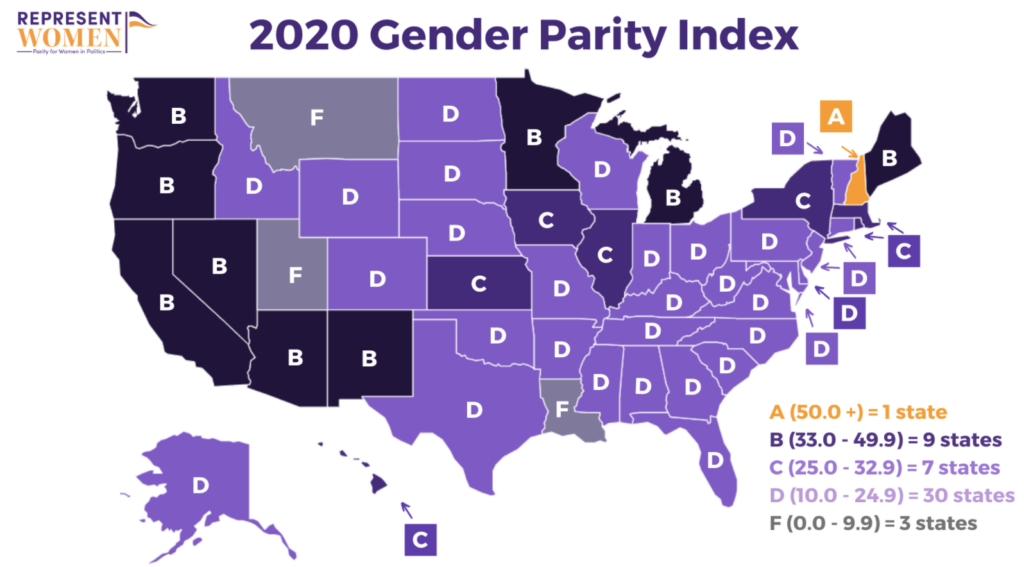The U.S. as a whole is less than half-way to parity, with women making up roughly 24 percent of all elected officials.

With record numbers of women and women of color candidates on the ballot this Tuesday, many are projecting another “Year of the Woman.” If projections are correct, this would be the third “Year of Woman” in the past three decades, the second in the past three years alone.
But even with the rosiest projected outcomes for the record number of women running, the United States would still fall short of gender parity and progress toward parity would be uneven across the country and between parties.
RepresentWomen’s 2020 Gender Parity Index (GPI), scores and ranks all 50 states for women’s representation at the local, state and national level—giving an annual snapshot of the United States’ progress, or lack thereof, toward parity.
The trends in 2019 continue in 2020, while some states continue to close in on parity, the majority are less than halfway to parity; and, progress is uneven across the racial, ideological and geographic spectrums. The U.S. as a whole is less than half-way to parity, with women making up roughly 24 percent of all elected officials.

The west coast has the highest concentration of states approaching parity with six of the nine U.S. states receiving “B” grades located in the west. Simultaneously the vast majority of the midwest and southern states received “D” grades for another year in a row.
New Hampshire remains the only state to achieve gender parity, receiving a score of 50.1 and an “A” grade, after it slipped in 2019 to a “B.” Montana dropped in score for the 2020 report, joining Utah and Louisiana in the “F” bracket, all three states received scores lower than ten out of one hundred.
As many celebrate the potential for candidate firsts this cycle including potentially the first Filipina American, Korean American, Black Latina and Queer Latinas in Congress and first all woman of color delegation from New Mexico, fewer mention 13 states still have all-male delegations and four states failed to nominate a single woman to the general election. The fact we are celebrating candidate firsts for women in 2020, a century after women won the right to vote, only serves as a reminder of how incremental progress for women has been in the past 100 years.
Despite these lagging indicators, most commentary on the 2020 election celebrates the “record” numbers for women candidates which we should, but with a dose of reality. The 2020 election cycle is primed to be another “record” year for women, with the 322 women running in the general Congressional election on Tuesday outpacing the 2018 record of 234 women.
Additionally, the diversity of candidates has improved as well, with 115 of the 322 women candidates, being women of color. But, our “record” breaking numbers continue to fall behind much of the world and most of our democratic allies who have implemented modernized electoral systems and recruitment strategies to improve descriptive representation of their legislative bodies.
In fact, in the monthly Inter-Parliamentary Union rankings for gender parity in the lower house, the U.S. ranks 87th of 193 countries; with, the majority of countries outranking the U.S. using gender quotas and proportional representation electoral systems.
Even with another “Year of the Woman,” we will fall short of gender parity (by a lot), and progress made is not guaranteed to be sustained because midterm elections have historically favored the party to have lost the presidency two years prior.
As we celebrate the many victories for women candidates and a century of suffrage (at least in name if not in practice), we must also grapple with and address the electoral system and structures which continue to impede women’s success.
Our winner-take-all, plurality win electoral system was chosen over 200 years ago, and designed so that even after many record-breaking years for women and people of color, the end result remains white and male majorities in Congress.
You may also like:





